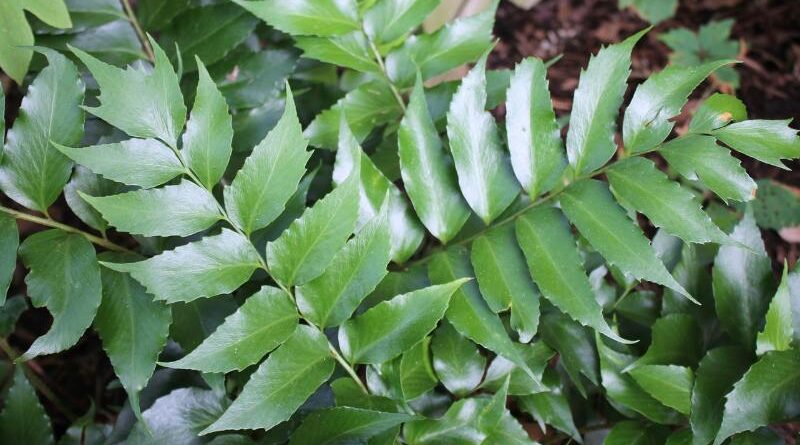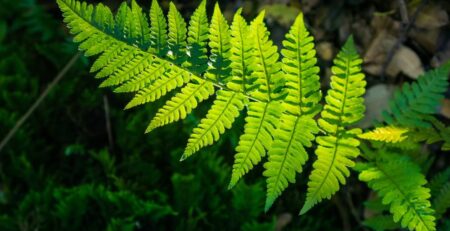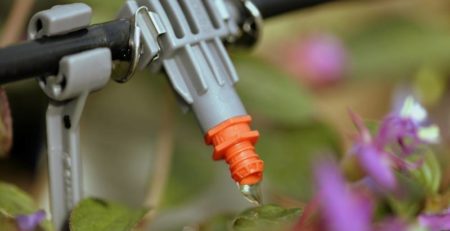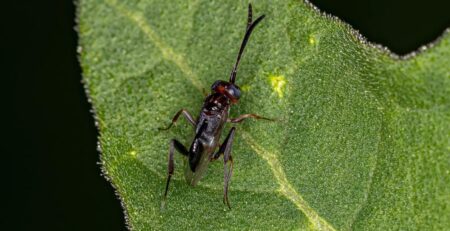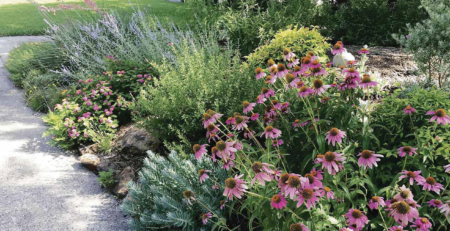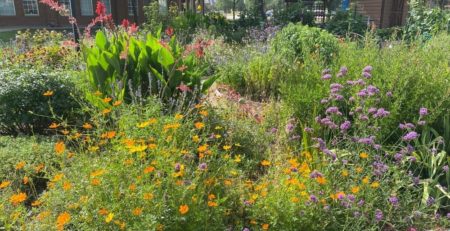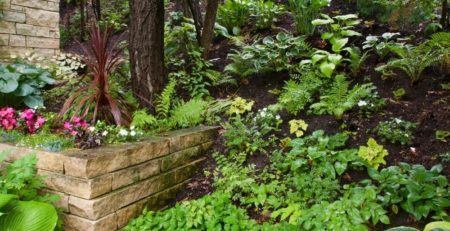What Is A Texas Superstar Plant?
What is a Texas Superstar® plant, you ask? Texas Superstar® is a registered trademark owned by Texas A&M AgriLife Research. Texas Superstar® plants are compiled by a team of individuals from Texas A&M AgriLife, the Texas Department of Agriculture, and the Texas A&M AgriLife Extension Service. At a recent Texas Superstar Plant Advanced Training Conference, I learned the following from Greg Grant, an AgriLife County Extension Agent in Smith County and one of the co-chairs of the Texas Superstar plant program:
Only the most reliable and best-looking plants are included. The criteria for selecting a Texas Superstar® includes:
- Must be attractive and useful to the gardening public.
- Must consistently perform well in the Texas summers regardless of gardening practices and growing locations.
- Must be as pest resistant as possible.
- Must be able to be propagated and mass-produced in sufficient numbers to meet consumer demand.
- Preferably is so attractive in the sales container that it “sells itself” to consumers – who have never heard of the attributes of the plant.
What does this mean to the average homeowner? The 2020 Texas Superstar® brochure states it means you will find landscape success with beautiful, proven, Texas-tough plants. There are 88 plants which include annuals, perennials, per-annuals, woody shrubs, trees, and specialty plants (edibles).
In 2022-2023, David Rodriguez, a co-chair of Texas Superstar Plant Program State Committee, highlighted several newly released plants that are exciting options for home gardeners. They are the Tangerine Beauty (Bignonia capreolata), Red Yucca (Hesperaloe parviflora), Holly Leaf Fern (Cyrtomium falcatum), Gulf Muhly (Muhlenbergia capillaris), Ruby Crush Tomato (Solanum lycopersium), Firecracker Plant (Russelia equisetiformis) and Mexican White Oak Tree (Quercus polymorpha).
TANGERINE BEAUTY (Bignonia capreolata, 2022) was discovered in a garden in San Antonio by Texas horticulturist and garden writer Scott Ogden in the 1980’s. The Tangerine Beauty crossvine is commonly pollinated by ruby-throated hummingbirds and is known to scatter repeat blooms during the growing season. Grant said the Tangerine Beauty’s namesake color is much showier than its native relative, trumpet creeper, that sports banana-yellow tubular flowers with maroon highlights. There are also selections of crossvine with colors ranging from orange to red. Grant said that “You can’t avoid paying attention to it, and the bigger it gets, the more spectacular it can be.” The picture below is from the Texas A&M AgriLife site.

Exposure: Heaviest bloom occurs in full sun; however, the plant will tolerate moderate to dense shade. It is hardy to zone 6.
Size: This clinging evergreen vine can easily grow to 15 feet wide and tall.
Plant Type: Vigorous, evergreen, clinging vine. It does shed leaves, but its evergreen foliage makes good covers, screens, and provides permanent shade. Grant said that giving it space to grow where you want it to cover, or climb is the main consideration with Tangerine Beauty.
Planting time: Container grown plants can be planted year-around.
RED YUCCA (Hesperaloe parviflora, 2022) is one of the latest Texas Superstar plants. It is a tough, drought tolerant plant that produces showy, reddish-coral blooms from spring through midsummer. It is known colloquially as pink yucca, red flowered yucca, soft-tip yucca, or samadoque. It is a favorite of southwestern U.S. gardeners and is a native of Texas.
The Red Yucca is a native to southwestern Texas and adjoining areas of Mexico. Grant states that, “Red Yuccas are one of those plants that we should all be utilizing. They thrive in most parts of Texas alkaline to acidic soils. It is tough to find a plant that is adapted to Texas as well as red yucca. The plant offers showy flowers over long periods of time and clumps spread slowly enough to allow foliage to serve as an alternative to small shrubs.”
Exposure: Sun loving, but can survive in partial shade, though blooms will be reduced. They also tolerate reflected heat and wind.
Size Height: This evergreen clump-forming perennial produces foliage that is 12 to 18 inches tall and slowly spreads to typical of 2’ to 3’, occasionally wider over time.
Plant type: Evergreen herbaceous shrubby perennial succulent.
Planting time: Container grown plants from early spring through fall.
Greg Grant said, “These plants are foolproof if you avoid overwatering and is the perfect Earth-Kind plant. It is one of those rare plants that is not picky about soil or moisture availability and is showy most of the year.”
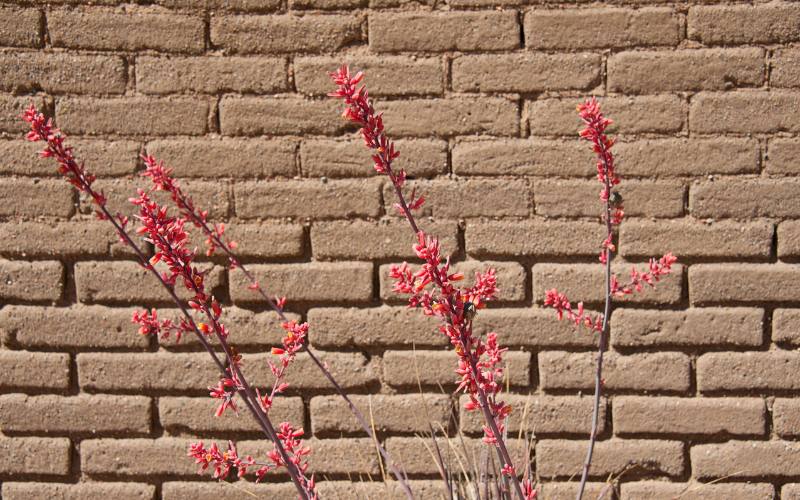
HOLLY FERN (Cyrtomium falcatum, 2022) also known as Japanese holly fern and fish tail fern, is an evergreen herbaceous shrubby perennial succulent. David Rodriguez, a Texas A&M AgriLife Extension Service horticulturist in San Antonio said that “Holly fern is a long-standing plant that has stood the test of time. Once it is established and with good mulching, it can tolerate moderate drought and is cold hardy.” The fern makes an excellent groundcover or border edging in shaded locations.

Exposure: Zone 6 to 10
Size: Height is 1 -2 feet with spread about 2 – 3 feet
Plant Type: Fern with stiff, glossy, green fronds of holly like leaflets with coarsely fringed margins. Its foliage is loose clumps of deep green, holly-like mature leaves with light green accents provided by new growth emitting from the center of the clump.
Light: Prefers partial shade but survives in full shade. Giving this fern morning sun and afternoon shade is ideal.
Per David Rodriguez, Holly Fern makes an excellent understory plant. It can also be used to add excellent texture to large containers surrounded by spilling perennials and annual ornaments.
GULF MUHLY (Muhlenbergia capillaris, 2022) also known as hairy-awn muhly or pink muhly, is a native perennial ornamental grass. It is known for its incredible drought tolerance and the pink color of its inflorescences. This tough native grass is excellent for providing that shot of color as our summer beds fade from excessive heat. The airy pink profusion of blooms has been described as clouds, fireworks or a rose- colored fog.

Exposure: Heaviest bloom occurs in full sun; however, the plant will tolerate some shade. It is hardy to zones 6 through 9.
Height: Gulf muhly has an upright mounding habit and usually grows to 2 – 3 feet wide with unbranched long, wiry deciduous green leaves. This perennial grass has dramatic pink cloud of blooms that extend to about half the plant’s height of 2 – 3 feet.
Gulf Muhly are good as a single specimen plant, but their color can be dramatic when planted in groups. It is very low maintenance once established. The grasses provide natural sanctuary for many small birds and pollinators and are known to be deer resistant and largely pest and disease free per David Rodriguez. It is a very shareable plant once it becomes older and full. Root clumps can be dug out and split into halves or quarters to place in other locations or to give to friends and family.
RUBY CRUSHED TOMATO (Solanum lycoperiscum, 2023). This is a determinate grape hybrid type. The tomato plants tend to grow in a bush-like habit and stop vegetative growth when they reach a certain height. Per Eagle Ridge Seeds it is a famous East Indian early variety. The fruit is slightly flattened with shiny deep red skins, smooth and meaty texture. Because this prolific bush plant grows 3-4 feet tall, tomato cages are suggested. The flavor is zesty. Seedway, a seed company, states that the Ruby Crust Tomato works well in a container. It shines in the field and the sugary-acid balanced fruits resist cracking, unlike other determinate grape tomato varieties.

MEXICAN WHITE OAK (Quercus polymorpha,2023) was only recently discovered in the U.S. (1992) as a native tree species, but is widely available in commercial nurseries. The following information is from Texas A&M Forest Service web site:

Tree Description: A medium-sized oak to 40 feet tall and a trunk to 2 feet in diameter, with a broad, rounded crown.
Range/Site Description: It is widely planted in Texas as a landscape plant.
Leaf: Simple, alternate, 2” to 5” long, highly variable, but often with several shallow lobes or teeth towards the tip. Leaves are thick, leathery, and semi-evergreen, with distinct raised veins on the yellowing underside. New leaves in spring are peach-colored and in colder climates the leaves are late-deciduous and turn yellow brown.
Flowers: Male and female flowers borne in spring on the same tree, the male flowers on catkins up to 4” long; the female flowers are less conspicuous.
Fruit: An acorn, maturing in one year, up to 1” long and enclosed one-half by the acorn cup.
Bark: Dark to light gray, developing scales and flakey plates, then shallow fissures on older trunks.
Wood: Primarily used as a landscape tree in the nursery trade, and often sold as “Monterrey Oak”.
Similar Species: Netleaf oak (Quercus rugosa) has similar venation on the undersides of leaves but has obovate (tear-shaped) leaves and is restricted to high elevations in West Texas.
FIRECRACKER PLANT (Russelia equisetiformis, 2023) bears clusters of scarlet tubular flowers which resemble small firecrackers. It provides reliable color from spring through fall. Slender, rush-like stems start our erect, then fall over into long, showy cascades. Great for training on a trellis, accenting a border, or spilling out of a container (not to be confused with Firecracker Jatropha Jatropha integerrima). Russelia equisetiformis is an outstanding coastal plant.
Exposure: Best flowering is in full sun, but plants will still remain attractive in partial shade.
Size: In tropical climates plants may grow 3 feet tall and 6 feet wide.
Plant type: Summer annual where winters are cold; woody shrub along the coast and in South Texas.
Blooming period: Spring until fall– Southern Florida plant guide states that this plant does best in Zone 10, though you can plant in a container in Zone 9B and bring inside during the cold weather.
Heat tolerance: High
Water requirements: Low
Additional comments: Tolerates a lot of salt spray and salty soil, but not a lot of storm winds. Half hardy tropical plant; protect or expect damage below 25 degrees.
Attributes: Attracts hummingbirds, suitable for xeriscaping, salt tolerant, and tropical. Plants for Texas states that it is great for containers, for spilling over walls, and for producing movement in the garden.


